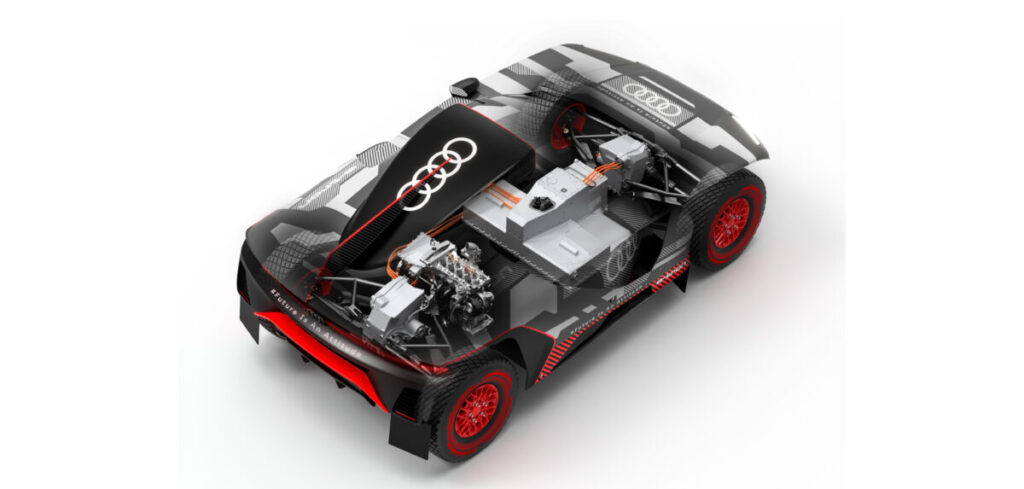With the 2022 Dakar Rally a little over three months away, Audi is pushing to validate its hybrid-powered RS Q e-tron ahead of its race debut.
“The prototype was created in around 12 months,” remarked Julius Seebach, managing director of Audi Sport and responsible for motorsport at Audi. This gave barely six months between rollout of the first car, which was June 30, 2021, and the start of Dakar on January 1, 2022. “That’s a very short time to prepare for such a complex project. I cannot emphasize this often enough: The Audi RS Q-e-tron is the most sophisticated vehicle in terms of technology that Audi Sport has ever deployed in racing.”
The RS Q e-tron features an electric powertrain with two motor-generator units (MGUs) sourced from the company’s Formula E effort and the high-voltage battery is charged by a range extender consisting of the efficient TFSI gasoline engine previously used in DTM and another MGU.
Andreas Roos, project leader for all factory-backed motorsport activities, said, “The Dakar is extremely challenging – even for a conventionally powered vehicle. With our powertrain concept, the challenge is distinctly greater. The chassis and suspension do not entail major differences, but we have a lot more components in the car that have to be not only high-performing, lightweight and functioning reliably under the extreme conditions of the Dakar, they also have to be attuned to each other perfectly and work together smoothly.”
While the chassis components are conventional for a Dakar machine, it is the drivetrain that adds considerable complexity. “And each of these components, for instance, requires a dedicated cooling system,” pointed out Roos. “That means we have not only one cooling system in the car but as many as six, including the intercooler and air conditioning system for the driver and co-driver.”
Packaging is another major issue with such a complex vehicle. “We had to make use of every centimeter to accommodate all the components in the car,” stated Roos. However, he admitted that this comes at the cost of ease of service: “For instance, changing the front-axle differential still takes a lot of time at the moment. That must be achievable faster at the Dakar and is one of the issues we’re currently working on under massive time pressure.”
The harsh terrain and environmental conditions of the Dakar also make life particularly difficult for a hybrid powertrain, with Roos suggesting that the electronics are a particular source of concern: “We have a really large amount of sensitive electronics and many electrical components in the car that we need to protect against sand and water as effectively as possible. We’ve learned a lot in the tests we’ve run so far and are now trying to feed all of our findings into the rally cars in time for the Dakar Rally.”
To date, in addition to durability testing, much of Audi’s work has centred on refining the hybrid powertrain’s control strategies. “We’ve got two central control units and around four kilometers of cables in the vehicle – not even counting the high-voltage cables,” said Roos. “The interaction of all powertrain components and of the high-voltage battery as well is extremely complicated. If anything doesn’t fit there the car will stop.”
Construction of the first chassis bound for the Dakar has already commenced. Audi says that its development schedule up until December is set to include testing in a climate chamber to simulate the temperatures and elevation differences prevailing at the Dakar as well as a pendulum test on a speciality test rig.



